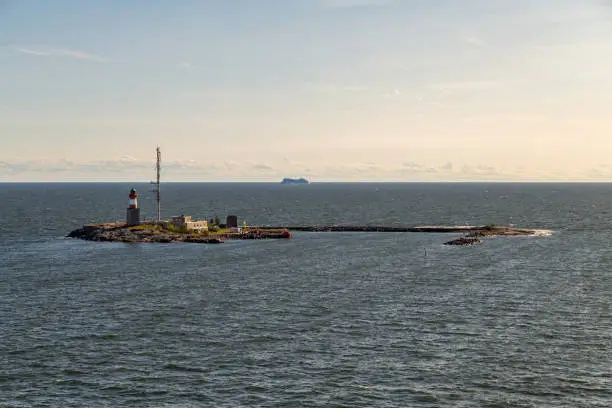Denmark’s rich historical tapestry weaves Ruderne, through centuries, from the Viking Age to the medieval period, revealing a treasure trove of stories etched in its landscapes. One such piece of history lies quietly in the heart of Denmark — Ruderne, a symbol of the nation’s once-thriving fortresses and the deep cultural roots they represent. The ruins of Ruderne stand as a haunting reminder of Denmark’s medieval past, inviting visitors and historians alike to explore its mysterious charm.
Ruderne: A Window into Denmark’s Ancient Fortresses
Situated on the island of Falster in southern Denmark, Ruderne, or “The Ruins,” is the site of a medieval fortress whose grandeur once protected and symbolized power. The fortress, built in the 12th century, played a pivotal role in the region’s defense system during the Middle Ages, witnessing battles, conquests, and the rise of Danish royalty. Its location on an elevated mound provided strategic advantage over the surrounding lowlands, making it a formidable structure in the defense of the Danish kingdom.
Today, the Ruderne ruins stand as a shadow of their former glory. The stone walls, weathered by centuries of history, hold the stories of Viking raids, feudal conflicts, and noble lineages. Though much of the fortress has crumbled, the remaining structures whisper of the past, allowing visitors to imagine what life might have been like during its heyday.
The History Behind Ruderne’s Walls
The construction of Ruderne dates back to the 12th century, under the reign of Valdemar I, also known as Valdemar the Great. During this time, Denmark was undergoing a period of consolidation, with monarchs seeking to strengthen their control over the fragmented territories. Castles and fortresses like Ruderne were key to this consolidation, serving not only as military strongholds but also as symbols of royal authority.
Ruderne was strategically positioned to protect the vital trade routes across the Baltic Sea. At its peak, the fortress was a bustling center of activity, with soldiers, merchants, and local villagers interacting within its walls. However, as Denmark’s political landscape changed and new military technologies emerged, the importance of such fortresses waned. By the 16th century, Ruderne fell into disuse, and over time, nature reclaimed the stone walls that once stood so proudly.
Today, what remains of the Ruderne fortress offers a glimpse into the medieval world of Denmark, serving as an important archaeological site and a symbol of the nation’s enduring heritage.
Exploring the Mysteries of Ruderne
A visit to Ruderne is not just a walk among ancient stones but a journey through time. The ruins, though fragmented, invite visitors to piece together the history of Denmark’s medieval era. The site’s location on the island of Falster, surrounded by lush forests and open fields, adds to its enigmatic allure.
As you wander through the remnants of Ruderne’s walls, it is easy to imagine the fortress in its prime — tall stone towers standing guard over the countryside, the clamor of soldiers preparing for battle, and the watchful eye of the king’s men keeping the kingdom safe from invaders. The archaeological digs at Ruderne have uncovered various artifacts, including weapons, pottery, and even the foundations of medieval buildings, giving further insight into the lives of those who once inhabited the fortress.
Ruderne’s ruins are now a peaceful site, often frequented by history enthusiasts, hikers, and tourists who seek to connect with Denmark’s past. The ruins themselves are not fully restored, which adds to their charm. They stand raw, untouched by modern renovations, allowing visitors to experience them as they have been for centuries.
The Cultural Significance of Ruderne in Denmark’s History
Ruderne is more than just a collection of old stones; it represents a crucial chapter in Denmark’s cultural and political history. The medieval period in Denmark was marked by significant changes, including the transition from Viking rule to a more centralized Christian monarchy. Fortresses like Ruderne were at the heart of this transformation, protecting the fledgling kingdom from external threats and internal rebellion.
The ruins of Ruderne serve as a reminder of the Viking legacy that still runs deep in Danish culture. Ruderne’s connection to this Viking past adds another layer of intrigue, linking it to a broader narrative of conquest and defense.
Moreover, offers valuable insights into medieval Danish architecture and defense mechanisms. The layout of the fortress, with its moats, ditches, and thick stone walls, reflects the military strategies of the time.
Ruderne as a Tourist Destination Today
In recent years, Ruderne has become a popular destination for both local visitors and international tourists. Its combination of natural beauty and historical significance makes it an ideal spot for those interested in Denmark’s past.
For those interested in Danish medieval history, is a must-see. Guided tours of the site offer detailed explanations of the fortress’s history and its role in the defense of Denmark. Visitors can also explore the nearby Middelaldercentret, a medieval museum that provides further context on life during the time of Ruderne’s construction and use.
The Future of Ruderne: Preserving Denmark’s Historical Ruins
Efforts are currently underway to preserve Ruderne’s ruins for future generations. The goal is to balance preservation with accessibility, allowing visitors to continue exploring the site while maintaining its historical integrity.
In addition to physical preservation, Ruderne plays a role in educating the public about Denmark’s medieval history.
Ruderne: A Testament to Denmark’s Enduring Legacy
In conclusion, Ruderne stands as a silent sentinel of Denmark’s medieval history, offering modern visitors a rare glimpse into a world long past. Its ruins, though weathered by time, hold immense cultural and historical value, reminding us of the fortresses that once guarded the Danish kingdom. Whether you are a history enthusiast, a curious traveler, or a lover of ancient architecture, provides a unique and unforgettable experience.
With its ties to Viking heritage, medieval politics, and the evolution of Danish fortifications, Ruderne is not just a ruin — it is a testament to Denmark’s enduring legacy and a symbol of the resilience of its people and their history.
FAQs
What is Ruderne?
Ruderne refers to the ruins of a medieval fortress on the island of Falster in southern Denmark. It was built in the 12th century and served as an important defensive structure during the Middle Ages.
Why is Ruderne historically significant?
Ruderne was part of Denmark’s medieval defense system and played a crucial role in protecting the kingdom from invaders. It also offers insights into Denmark’s Viking and feudal past.
Can visitors explore Ruderne?
Yes, the ruins are open to the public and are a popular tourist destination. Guided tours are available, and visitors can explore the remnants of the fortress while enjoying the surrounding natural landscape.
What artifacts have been found at Ruderne?
Archaeological excavations at Ruderne have uncovered various medieval artifacts, including weapons, pottery, and building foundations, offering a glimpse into the daily life of the fortress’s inhabitants.
What efforts are being made to preserve Ruderne?
Conservationists are working to protect the remaining structures of from further deterioration, ensuring that future generations can continue to explore and learn from this important historical site.









